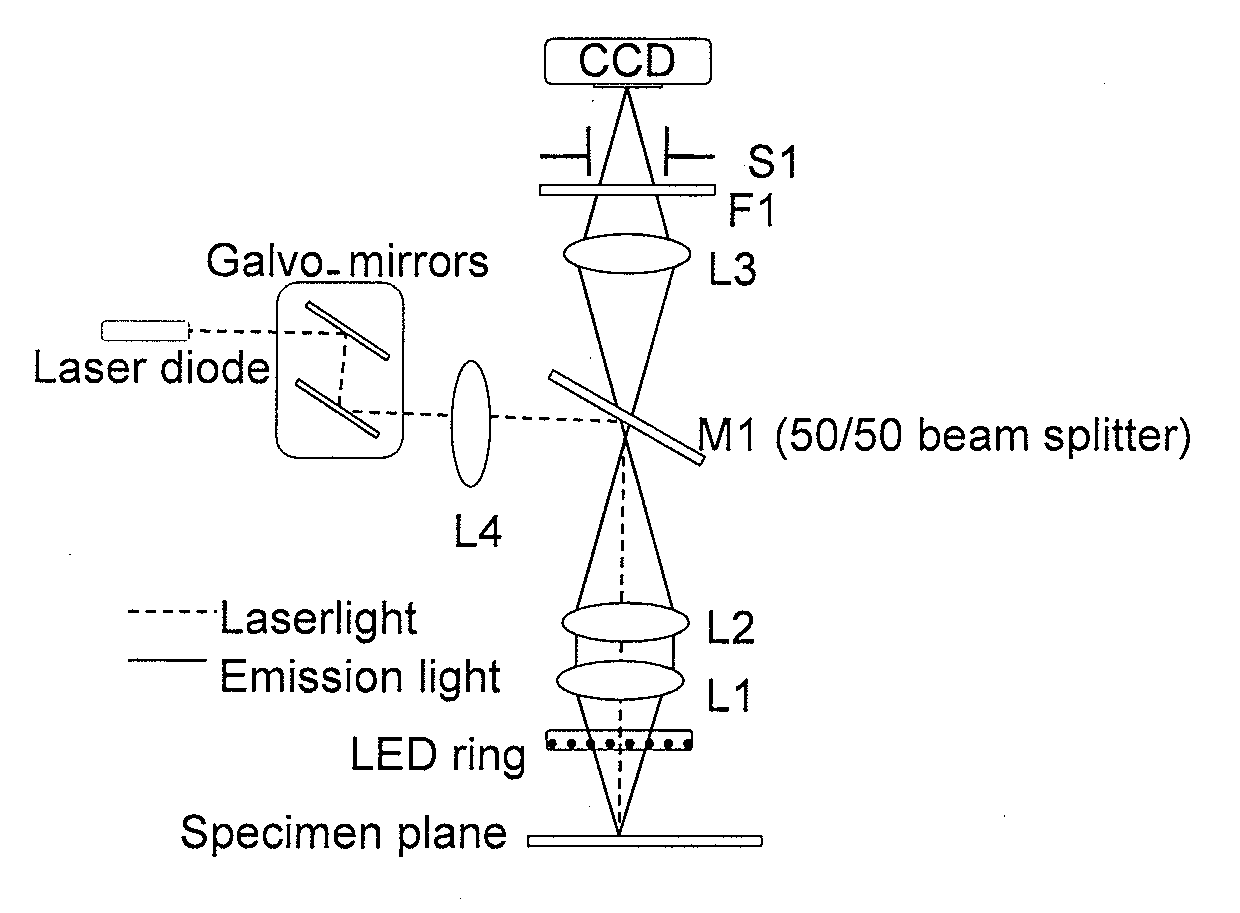Methods and System for Image Guided Cell Ablation with Microscopic Resolution
a technology of image guided cell and microscopic resolution, which is applied in the field of abnormal cell ablation, can solve the problems of not being able to remove all cancer cells, local recurrence, and poorer outcomes, and achieve the effect of preventing excess treatment to healthy tissu
- Summary
- Abstract
- Description
- Claims
- Application Information
AI Technical Summary
Benefits of technology
Problems solved by technology
Method used
Image
Examples
example 1
Interoperative Detection and Ablation of Cancer Tissue
[0095]Currently around 50% of breast cancer patients and 35% of sarcoma patients require second tumor de-bulking surgeries because a final pathology report returns days after the initial surgery indicating that residual cancerous cells have been left within the patient. Furthermore, 25% of the final pathology reports do not detect residual cancer cells due to sampling errors fundamentally inherent in the process. Thus, most patients require subsequent medical therapy including additional radiation or chemotherapy treatment to prevent cancer recurrence and metastasis stemming from residual cancer cells. The proposed study aims to investigate an intra-operative method of tumor margin assessment and treatment to ensure negative margins are obtained during the first surgery and additional surgeries are not required.
[0096]The intra-operative tumor margin assessment is performed by employing a fluorescence-based imaging system. One day...
PUM
 Login to View More
Login to View More Abstract
Description
Claims
Application Information
 Login to View More
Login to View More - R&D
- Intellectual Property
- Life Sciences
- Materials
- Tech Scout
- Unparalleled Data Quality
- Higher Quality Content
- 60% Fewer Hallucinations
Browse by: Latest US Patents, China's latest patents, Technical Efficacy Thesaurus, Application Domain, Technology Topic, Popular Technical Reports.
© 2025 PatSnap. All rights reserved.Legal|Privacy policy|Modern Slavery Act Transparency Statement|Sitemap|About US| Contact US: help@patsnap.com


